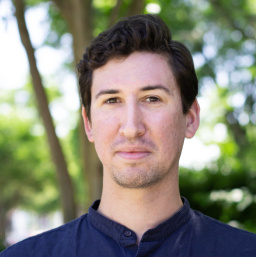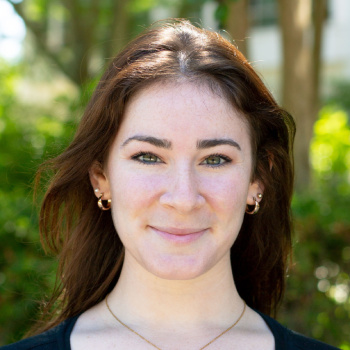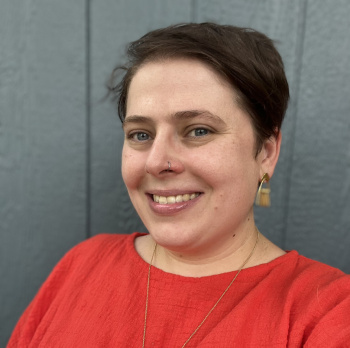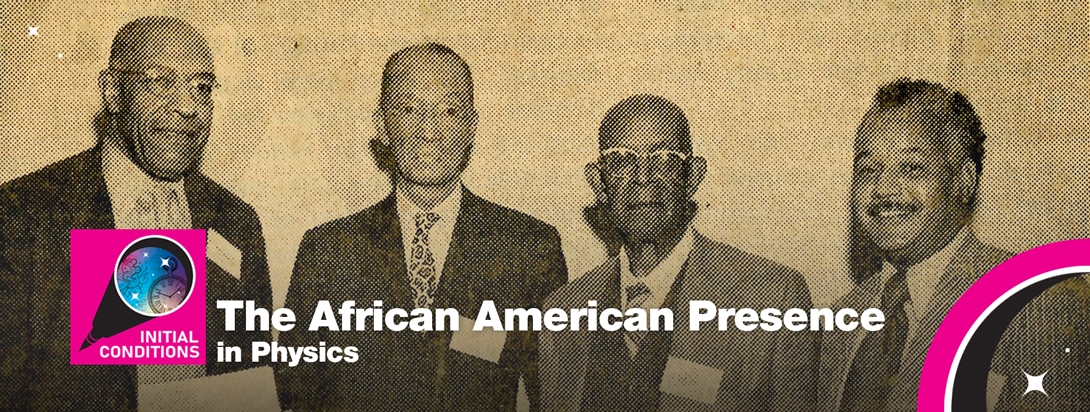
Based on the Ronald E. Mickens collection, this episode describes the history of the community of Black physicists in the United States. In 1999 the American Physical Society celebrated its centennial. In conjunction with the celebration, Dr. Ronald Mickens and his colleagues created an exhibit on the community of African American physicists and their contributions to the field during the twentieth century. In addition to providing a history of the African American presence in physics, this episode will also highlight several items in the Mickens collection.
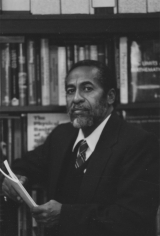
Dr. Ronald E. Mickens is the Distinguished Fuller E. Calloway Professor of Physics Emeritus at Clark Atlanta University. He is a physicist and mathematician who focuses on mathematical epidemiology, nonlinear dynamics, and mathematical modeling. He is also a historian of science, and has published two book on the history of Black physicists in the United States.
JUSTIN: All right, this is the Mickens collection. The full title is... The Ronald E. Mickens Collection on African American Physicists Circa 1950 to 2008, although it does go before that.
MAURA: Ronald E. Mickens, one of the most distinguished physicists in history, a man who thinks everyone should know more about the contributions of Black physicists in the United States.
JUSTIN: And this collection is a lot of biographical information that was submitted by physicists themselves, along with pictures. And they were collected by Mickens in 1999, when APS celebrated its centennial, he thought why don't we also celebrate the presence of African Americans in physics?
MAURA: And today, we have the great fortune to do just that. We're standing in the stacks of the Niels Bohr Library and Archives. And Justin is holding a box.
JUSTIN: A large, well-organized box.
ALLISON: I will happily accept this compliment on the library staff's behalf.
MAURA: And the box has a name.
JUSTIN: The Mickens Collection.
MAURA: I'm Maura Shapiro.
JUSTIN: And I'm Justin Shapiro, no relation.
ALLISON: And I'm Allison Rein, your tour guide through the Niels Bohr Library and Archives.
MAURA: And this is Initial Conditions, a physics history podcast.
JUSTIN: Every physics problem begins with a set of initial conditions that provide the context for physics to happen.
MAURA: Likewise, in Initial Conditions, the podcast, we'll provide the context in which physics discoveries happen. We'll dive into the history behind the science of people, places, and events that have been overlooked and largely forgotten.
JUSTIN: And today we're going to tell a story that is often left out of the history books: the story of African American physicists. And the special history that is contained here, in the Mickens Collection. So if you look inside, it's about 65 folders. Some of them are thinner than others. And the thin ones really don't have too, too much in them, but the thicker ones have a lot of really cool stuff. So let's start with, the largest file in here, the one for Willie Hobbs Moore. Willie Hobbs Moore was the first African American woman to earn a PhD in physics, which she got from the University of Michigan in 1972. Now, she passed away in 1994, I believe, so... (audio trails off)
MAURA: Today, we're going to explore the work of a handful of prominent African American physicists, whose work is featured in the Mickens Collection. People like Willie Hobbs Moore, Ronald McNair, Edward Bouchet, and James Lawson.
JUSTIN: And we'll take a trip to Atlanta, Georgia to sit down with Dr. Ronald Mickens to learn about the arc of his distinguished career.
MAURA: But first, Justin and I are going to brief you on the initial conditions that set the stage for our conversation today.
JUSTIN: I've got some initial conditions for you.
MAURA: Okay.
JUSTIN: All right. And I think you have one for me, right?
MAURA: I do.
JUSTIN: Okay, great. (both laugh) Well, this episode comes out of putting Black History Month into practice. In February, we launched on a research project on the history of the African American community in physics. And our initial conditions relate to the experience of African Americans in the field of physics. The first one is institutional racism. And the struggles that African American physicists faced in joining the field. Our second initial condition is about one tactic that pioneering African American physicists used to overcome institutional racism to some degree. And that is the importance of mentorship, and recognizing the first generation of African American physicists who help bolster interest in the field among young students.
MAURA: And our third initial condition is Dr. Ronald E. Mickens and his work to capture the history of African Americans in physics. So, can you tell me why the Mickens collection is so important?
JUSTIN: Certainly, Maura, I'd be glad to. To understand the importance and continuing relevance of the Micken collection, is it necessary to talk a bit about the history of the community of Black physicists. Facing racism, white supremacist attitudes and politics, segregation, and few legal protections against discrimination until the late 20th century. Black physicists struggled and succeeded in building a strong community. And, when we looked through this collection, we found a few themes. The first is the significant obstacle that African Americans overcame in building a scientific community while facing racial discrimination.
MAURA: African Americans were barred from most white colleges and universities until the 1960s, but there were some exceptions.
JUSTIN: In 1990, Harry Morrison reminisces about attending the Catholic University in Washington, D.C., where he received his physics PhD in 1960. It was one of the few white universities south of the Mason Dixon line, as he put it, to accept Black students.
MAURA: The Catholic University was the exception. Not the rule. The lack of educational opportunities for most African American students severely limited the professional development of that community. The Brown vs. Board of Education Supreme Court decision, which outlawed school segregation, didn't happen until 1954. And it took even longer for many schools to integrate.
JUSTIN: And this is not to say that there were no opportunities for talented and bright aspiring Black scientists. There was a small community of African American physicists in the 1950s and 1960s who built their own physics departments and curricula in historically Black colleges and universities. What we often call HBCUs today. Places like Fisk University in Nashville, North Carolina A&T in Greensboro, Howard University in Washington, D.C., Clark Atlanta in Atlanta, fittingly enough, Morehouse College, also in Atlanta, and Virginia State College, now University, in Petersburg, VA, among others.
MAURA: These institutions were extremely important in educating younger generations of Black physicists during the late 20th century.
JUSTIN: And here's an example. Donald Edwards, who established the physics curriculum at North Carolina A&T had a picture of Ron McNair, a former student who went on to earn a PhD from MIT, included in one of the headshots he submitted to Mickens. McNair perished in 1986 in the Challenger disaster. As one of the most visible Black astronauts, McNair's career represented a new era of increasing awareness of the talents and achievements of Black physicists.
MAURA: Another theme in this collection, which you mentioned as our second initla condition, is the significant role that mentorship played between senior and junior scientists in building the community of African American physicists. And we can see that in careers of people like Edward Bouchet, who was the first African American to earn a PhD in physics in the United States in 1876. There's also James Davenport, one of the founders of the National Society of Black Physicists. There's Halson Eagleson, John Hunter, Elmer Imes, and his mentee, James Lawson.
JUSTIN: And his mentee, Ron Mickens.
MAURA: All of Fisk University and there's many more.
JUSTIN: This emphasis on mentorship was a key factor in building the community of Black physicists. With that said, let's talk a little bit about the collections. They're organized alphabetically by last names, and there are 60-something entries. Let's talk about them chronologically, highlighting some of the individual biographies contained in the collection. Before we do that, (laughs) it should be noted that these materials and this information were collected by Ron Mickens as part of his research as historian for the NSBP. He did this historical research while also fulfilling his professional responsibilities as a professor of physics at Clark Atlanta University. His efforts captured the lives and research of a generation of physicists who grew up in the Jim Crow era at a time when African Americans were denied access to the opportunities granted to aspiring white scientists. We also see in this collection a transition over several decades, but accelerating after the 1960s, to more widespread acceptance of Black physicists as they continued to build their own community and institutions.
MAURA: Through this collection, we see the evolution of the Black experience in physics through the biographies of these people who have contributed to the field. Let's start with Edward Bouchet and Elmer Imes. The first two Black men to earn PhDs in physics in the United States. Bouchet earned his PhD from Yale in 1876. Imes earned his PhD from he Unversity of Michigan in 1918. Which is 32 years after Bouchet.
JUSTIN: Both Bouchet and Imes were deeply involved in educating Black students, with Bouchet mostly doing so in secondary schools. Bouchet's biography provided in the Mickens collection describes how after receiving his PhD, he taught for a time in Philadelphia. He eventually lost his position, however, as industrial and technical education took precedence over academic studies for Black students. There's a larger context here that gets into the different pedagogies supported by figures like Booker T. Washington and W. E. B. Du Bois that we don't have time, unfortunately, to get into here. Bouchet moved on and took a position in Lawrenceville, VA as the director of the academic department of St. Paul's Normal and Industrial School. According to his biographical entry, and I haven't been able to verify this elsewhere, one afternoon, he accidentally bumped into one of the town's prominent white attorneys and was subsequently assaulted by the residents. This was, of course, during the first decade of the 20th century, in the Jim Crow south, and Bouchet, born and raised in New Haven, CT, likely feared for his life. He returned to New Haven, where he died in 1918, two years before his mother, at the age of 66.
MAURA: Bouchet's home was demolished sometime in the following decades. He never married, had no children, and was buried in an unmarked grave, which Yale later found and marked with a large headstone with Bouchet's image engraved in 1998. Still, this is a fairly unceremonious end for the first Black PhD physicist in the United States. In recent years, he received more attention from the general community of physicists.
JUSTIN: His students regarded him as a strong mentor figure with a vibrant personality. In 1919, Imes married Nella Larson, a highly-regarded novelist and important figure in the Harlem Renaissance, who had also attended Fisk. Though the two would later divorce. In 1930, Imes became the chair of the department of physics at Fisk University, where he would remain until his death in 1941.
MAURA: And in fact, one of his students was James Lawson, who in 1935 became the first graduate from Fisk with a bachelors degree in physics. Lawson went on to attend his mentor's alma mater, the University of Michigan, obtaining his PhD in physics in 1939.
JUSTIN: And after that, Lawson spent his career teaching at historically Black colleges such as Southern University, Langston University, and eventually succeeding his mentor as chair of the department of physics at Fisk in 1942.
MAURA: Ron Mickens wrote an obituary of Lawson, published in the 1997 issue of Physics Today. Mickens points out that by encouraging his grad students to read papers at the annual meeting of the American Physical Society and the American Chemical Society, Lawson helped to integrate those organizations. This is part of the legacy of mentorship in the community of African American physicists.
JUSTIN: Lawson eventually left his position to teach elsewhere, but he returned to the campus in 1968 to serve as Fisk's president. In a time of social turmoil, as the civil rights movement and the counterculture took hold at Fisk, the predominantly white donors who funded the university expressed concern about the direction the campus was heading. They threatened to withhold funding, endangering the already financially precarious institution. Lawson was well-liked by the faculty and students, receiving applause from the student council president at his appointment. It didn't hurt that he was the first alum to serve as Fisk University President. Still, both enrollment and the endowment continued to decline under Lawson's administration and he resigned in 1975. He moved to Washington, D.C., where he held a number of positions at government agencies, including a stint in the Energy Research and Development Agency, which we discussed in episode three.
MAURA: In his final year, Lawson was given an honorary doctorate from Fisk, as well as a home to live in on campus. In 1996, he died at Fisk, his alma mater and that of his mentor, Elmer Imes.
JUSTIN: So these were some pioneering African American physicists. In their professional lives, we some of the themes that we talked about earlier. Racial discrimination was, of course, a constant force that shaped the education and careers of Black physicists in the 20th century. Some ways that the community overcame discrimination included a strong emphasis on education and mentorship. A legacy that continues to this day. Another was by growing the physics departments established at HBCs like Fisk, North Carolina A&T, and other HBCUs during the mid-20th century. These institutions in turn produced new generations of Black physicists. This was a long term goal, and HBCs continue to strive produce new generations of Black physicists. Now, at the top of this episode, we mentioned Donald Edwards, and how he had a framed picture of Ron McNair in the material that he sent to Mickens. Edwards established the physics curriculum at North Carolina A&T, from which McNair graduated in 1971. McNair went on to earn a PhD from MIT in 1976 focusing on laser physics.
MAURA: McNair then joined NASA as an astronaut in 1978. He was selected as one of 35 applicants in a pool of nearly 10,000. He first flew on the Challenger space shuttle in 1984, making him the second African American to fly in space.
JUSTIN: McNair represented the success of Black physicists in building their own institutions. He was a highly visible, determined, and gifted physicist who had graduated from North Carolina A&T, a historically black college. Donald Edwards was clearly proud of his student. But McNair was significant for another reason. On January 28th, 1986, he was one of seven astronauts who perished in the Challenger disaster. On that date, the Challenger underwent a critical failure on a record cold morning. And already, a tiny part of the solid rocket booster froze during the cold night. It lost its flexibility, allowing a breach of pressurized gas that cascaded into the total disintegration of the space shuttle Challenger miles above the Atlantic Ocean. The seven crew members, McNair included, died shortly thereafter. McNair was 35 years old.
MAURA: It's a tragic story, and all of this happened on live television. Among the crew was the first participant in the Teacher in Space project. Christa McAuliffe was expected to teach two lessons to school children while in space as part of her mission objectives. McNair was also planning to play the saxophone in space.
JUSTIN: While going through Mickens's collection and researching for this episode, we came across McNair's folder. It is a remarkable part of the Niels Bohr Library and Archives. And it begins with a letter from Cheryl McNair, Ron's wife. The letter to Mickens is quite friendly. Cheryl mentions that her late husband, as she wrote, spoke much of Mickens and would be glad to know that he still remembers him. Cheryl McNair provided a good deal of material related to Ron's career at NASA, and the Challenger disaster. One of the first items is an official NASA photograph of four African American astronauts. The image looks a bit odd, though, and on closer inspection, I'm pretty sure it was photoshopped. The astronauts, including McNair, wore four different space suits and the light hits each person differently. The caption simply reads, "Four astronauts from NASA's space shuttle program." But the back features a handwritten note indicating that the subjects were the first four African American NASA astronauts. We don't have time to get into it here, but that photograph highlighting the first four Black NASA astronauts, without stating that fact explicitly, invites further discussion. Continuing to flip through the collection, we came across a photograph of the crew that perished int he Challenger disaster. Near each smiling face is the signature of the corresponding astronaut.
MAURA: Cheryl McNair also sent Mickens one of her late husband's mission patches, which can be seen in this collection. This is a particularly somber entry in the Mickens collection.
JUSTIN: There's more to talk about in the Mickens collection. For example, part of the dissertation written by Willie Hobbs Moore, who in 1972 became the first African American woman to earn a PhD in physics from the University of Michigan, which as we talked about, was where Elmer Imes and James Lawson also did their graduate work. Also the efforts of (Sikasium Tingua 15:44) and Kennedy Reed to bolster physics education and research in Africa. (Carl Raus 15:48), the fifth African American to earn a physics PhD, and his description of his upbringing in Hazelton, Ohio, which is quite interesting, trust me. A biography of Kelly Miller, born to a once-enslaved father who studied mathematics and earned a masters degree at Johns Hopkins University, before going on to build up the physics curriculum at Howard University and, finally, a photograph of Homer Neal, on his yacht, which he named "The Supercollider."
MAURA: For his sake, I truly hope that his yacht was not a supercollider.
JUSTIN: Maybe. I guess there are different ways to interpret that. Either way, I don't know if I'd feel comfortable getting on a boat called "The Supercollider." But for the sake of time, let's just talk really briefly about the origins of the National Society of Black Physicists.
MAURA: But the early 1970s, the civil rights movement continued to excite young people of color at colleges and universities across the United States. There was widespread desire to embrace identities and organize communities of people with shared racial backgrounds and experiences. And this was true of the community of African American physicists.
JUSTIN: In 1972, on the campus of Fisk University, Ron Mickens, who had become a member of the Fisk faculty two years prior, met with James Young. The two discussed how to honor senior African American physicists. The ancestors, as they put it, who had mentored younger generations of students. And they decided to hold a banquet the following year honoring John M. Hunter, Holston V. Eagleson, and Donald Edwards, who together had educated around 90% of Black physicists then working in the United States.
MAURA: That is a truly impressive statistic.
JUSTIN: And it shows the importance of mentorship in the history of the community of African American physicists. Over 50 people attended the first banquet, and some of the local TV stations arrived to cover the event.
MAURA: Mickens and other organizers decided to make banquets annual events. Over the next few years, they expanded into annual days of scientific lectures held at different HBCUs.
JUSTIN: Also in 1972, the American Physical Society established a committee on minorities. Mickens was one of the people invited to serve on that committee.
MAURA: In 1976, at the annual day of scientific lectures, members of the APS community and other participants conversed on the idea of having a national society of Black physicists. It was to be established the following year, in 1977. The founding cochairs of the NSBP were James Davenport and Walter E. Massey, who would later direct the National Science Foundation.
JUSTIN: Mickens served as NSBP historian for several years. It was during his time there in 1999 when the NSBP created an exhibit highlighting the accomplishments of Black physicists based ont he material he collected. Let's turn now to Mickens. I had the good fortune to travel to Atlanta, GA to meet Dr. Mickens and hear his story first-hand. He invited me into his home and we sat down in his kitchen to talk about his life and work.
JUSTIN: Dr. Mickens, how are you?
MICKENS: I am fine.
JUSTIN: Wonderful. So the first half of this episode was based on the Ronald E. Mickens collection, which is a collection consisting of biographical material, accomplishments, other material. Predominately from the community of African American physicists. And you used it for an exhibit that was put on by the NSBP at the end of the 20th century, I think in 1999 or 2000.
MICKENS: Yes, the centenary.
JUSTIN: Yes. And it's a really excellent collection and I found quite a lot in it. And we want to talk about that collection, but to begin, would you mind describing your professional background? What do you study, what are your research interests, and what are you working on now?
MICKENS: Well, I did my undergraduate work at Fisk University in Nashville, TN. And I had sort of a triple major: mathematics, physics, and chemistry, though formally, my degree is in physics from there. After Fisk, I went to Vanderbilt University for two reasons: one, because of various civil rights activities that were occurring in the city and I wanted to stay involved with the particular situation that was presented there. And secondly because I was very familiar with Vanderbilt University, having taken courses there as an undergraduate for at least, I think, two summers or three summers. And I knew many of the professors at Vanderbilt University. We had reached a point of, let's say, equilibrium in how we interacted with each other. They understood me and I understood them. While I was at Vanderbilt University, my advisor, who was chair of the department, went on holiday. He told me the only thing I needed to do was to do research. And when he meant "do research," he didn't mean other thing, I couldn't do other things, but as far as he was concerned, the only thing that counted was the research. And that's what I did. And I think when I finished, I had about 10, 11 publications. When I went to Vandy, I had two national fellowships that were not attached, at least at that time. I could use anywhere. One was a Woodrow Wilson for one year and the second one was the Danforth Fellowship for three years. So I used them there and then in my fourth year, I received a National Science Foundation postdoctoral fellowship to go to MIT. Yeah. At that time, the NSF postdoctoral fellowship was very prestigious. It's still prestigious but you know unusual for many of them to be given out. My research has covered a multitude of areas, from non-linear oscillations to reaction rate theory to a whole lot of really useless papers in high energy physics, but they were beautiful papers to me anyway. To in recent years, finite difference schemes and non-linear oscillations. And so what I do is when I switch fields, after about five or six years, I write a book on it. And you know so currently, I like to describe myself not as a physicist or mathematician, but as a curiositist. Someone who is curious about many things. And ask and try to model them. And my modeling methodology is to use or to consider or construct the simplest possible system that is consistent with all of the features that I want to be incorporated into the phenomena that I am studying. And so my latest book, it deals with, the title of it is "Mathematical Modeling With Differential Equations." So my next book is probably going to be... I don't want to call it an autobiography. I want to call it My Story, because some of it is going to be true, some of it is not going to be true. But all the stuff that's not true should be true. (laughs) It should have happened.
JUSTIN: Thank you for that. I look forward to reading "My Story." Not my story, of course, but your story, when it comes out. And I know we're recording in Atlanta, but the podcast is based in College Park, MD. And you grew up a couple of hours south of there, right? In Petersburg, VA.
MICKENS: Correct.
JUSTIN: And then you went to Fisk University in Nashville, TN. What was your early education like, and why did you end up choosing Fisk?
MICKENS: Well let me answer the question about Fisk first. I had never heard-- I graduated from high school, I had four or five scholarships to the Negro colleges, that's what they called them in those days. You know, Virginia State, Hampton, Norfolk State, and so forth. And I didn't want to stay in Virginia. I wanted to see the world. And one day in June... No, this was June I graduated from high school, and I didn't know what I was going to do in a couple of months. I walked past the high school, and my counselor, you know, the college counselor for the high school, called me in and asked me what was I going to do? And I said, "I have no idea." And she said, "I am going to call up a friend of mine at Fisk. They have a summer program." Remember that this was right after Sputnik, you know, it was 1960. And many of the colleges, including the historically Black colleges, had money for summer students. And so I went to Fisk. And the interesting thing about that summer was that they gave all of us a series of standardized tests at the beginning. And on most of the tests, I made 98th percentile, 99th percentile. And at the end of that period, you know, they gave us the same tests again or something similar, and I made a lower score. So I attribute that my experience that summer (laughs) as a negative learning. But I still didn't-- had not applied to any colleges, and when I left Fisk, I was getting ready to leave Fisk in August, the director of the program, Sam Massey, a very eminent chemist, asked me what was I going to do? And I told him I didn't know. And he said, "Well, we'll offer you a modest fellowship and you can come to Fisk." And by modest, he was correct. It was very modest. (laughs) You know. But I was able to, throughout my whole tenure at Fisk, work in the infrared research laboratories. And so actually it was good that I was poor, because being able to work in the laboratories, it gave me access to a number of scientists in a-- nationally known scientists in infrared spectroscopy. I met with them scientifically, socially, and all that kind of stuff together. And so that was a very good part of my education. And some of the summers I went to Vanderbilt University to take courses. I think deep down they were using me as an experiment, you know? "Let's see how the Negro does around whites." Well, I mean, I have no problem being around anyone. I sit on the front row, I raise my hand, and they called on me. 99% of the time I was right when I gave responses. And even the 1% when I was wrong, turned out later I was right, so I was 100% right. (laughs) So I, you know, when thinking about graduate school, I had the fellowships, Woodrow Wilson and Danforth, and for as I said earlier, for various reasons, I wanted to stay in Nashville, and so thing worked out quite well. You know, I had a good social life over there, you know, academic life, and later on, you're going to ask me this question, was I discriminated against, and I'll talk a little bit about that, and the answer was no. I wasn't. But that's my view of things. And I don't give a shit about other people's view of it, because I've had a lot of people come up to me and say, "Oh, you must have had a hard time." And I usually tell them, "Well how can you tell me my experience? You had a hard time, but you cannot assume that I had a hard time."
JUSTIN: That's Dr. Ronald Mickens, the distinguished Fuller E. Callaway Professor Emeritus of physics at Clark Atlanta University. We spoke together in his home in Atlanta, GA. We'll continue our chat with Dr. Mickens next week, as he shares with us how he learned to succeed in the physics profession by tuning out the noise of discrimination.
MAURA: To learn more about our discussion and find related photographs, blog posts, and transcripts for this episode, check out our website at AIP.org/initialconditions, or click the link in the episode description.
JUSTIN: Also a shoutout today to our tour guide and the associate director of library collections and services at the Niels Bohr Library and Archives, Allison Rein.
MAURA: This episode was created, researched, and written by Maura Shapiro and Justin Shapiro.
JUSTIN: Allison Rein is our executive producer, with audio production and editing by Kerry Thompson.
MAURA: Special thanks to the wonderful staff of NBLA and CHP for supporting us in all our research needs.
JUSTIN: Initial Conditions is generously sponsored by the Alfred P. Sloan Foundation.
MAURA: I'm Maura Shapiro.
JUSTIN: I'm Justin Shapiro.
MAURA: And you've been listening to Initial Conditions.
ALLISON: From the Niels Bohr Library and Archives at the American Institute of Physics.
Interview of Ronald E. Mickens by David Zierler on August 5-7, 10, 11 & 13, 2020, Niels Bohr Library & Archives, American Institute of Physics, College Park, MD USA, www.aip.org/history-programs/niels-bohr-library/oral-histories/47213.
In this Oral History Interview, Dr. Mickens describes his childhood, how he became interested in physics and mathematics, and his career with Clark Atlanta University and the National Society of Black Physicists.
Mickens, Ronald E., editor. Edward Bouchet: The First African-American Doctorate. Singapore: World Scientific Publishing Company, 2002.
This book describes the life and work of Edward Bouchet, the first African American to earn a doctorate in physics. It highlights the distinct obstacles that Black scientists faced in building their careers and a community with their colleagues.
Mickens, Ronald E., editor. The African American Presence in Physics. Atlanta: Ronald E. Mickens, 1999. Available here.
This book emerged from the APS centennial exhibit of the same name. Through personal accounts, speeches given at the opening of the exhibit, and biographical materials submitted to Mickens, this book describes in great detail the history and accomplishments of African American Physicists.
Special thanks to our guest, Dr. Ronald Mickens. Kerry Thompson of Thompson House Productions produced this show. Allison Rein is executive producer. Initial Conditions: A Physics History Podcast is generously sponsored by the Alfred P. Sloan Foundation.
Sources and Collections Used
Ronald E. Mickens collection on African-American physicists. American Institute of Physics, Niels Bohr Library & Archives, College Park, MD 20740, USA.

















